Almeria, known to the Muslims as 'The Mirror of the Sea' was the largest and most prosperous port in al-Andalus. The city was officially founded in 955 AD.
By Nick Nutter | Updated 18 Mar 2023 | Almería | Cities |
Login to add to YOUR Favourites or Read Later
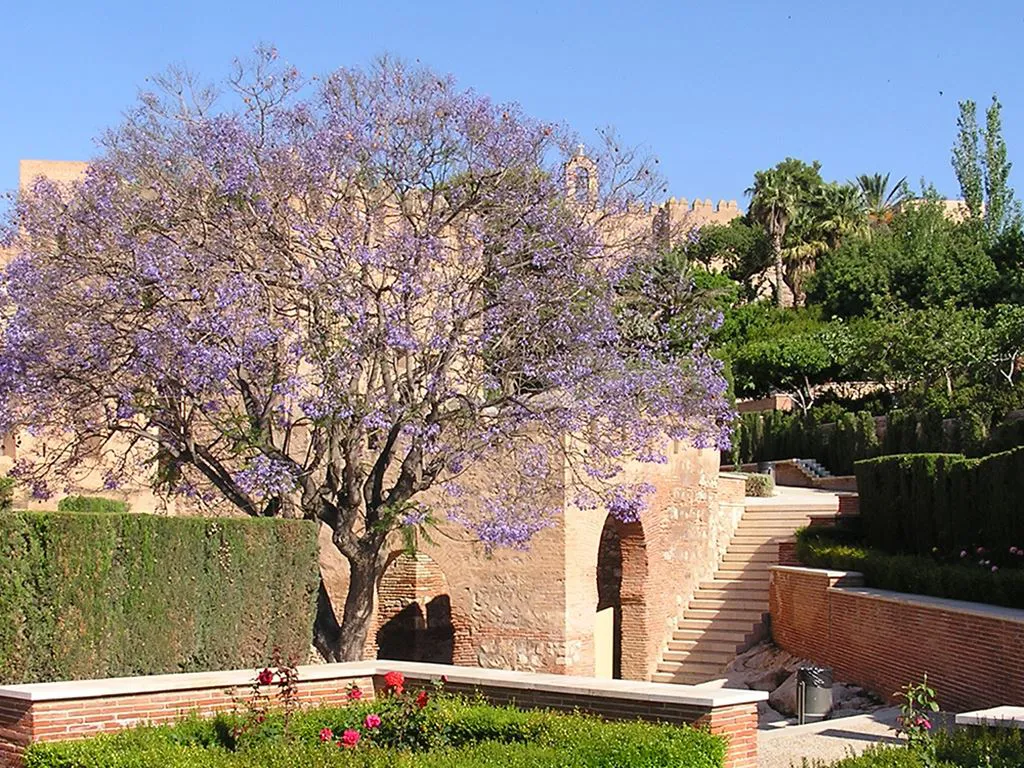
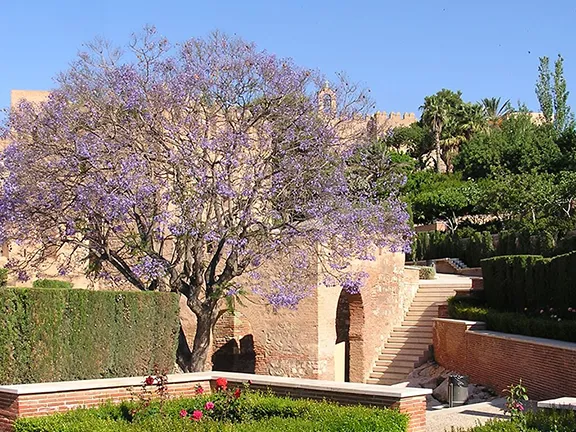
Alcazaba Almeria
The land around what is now Almeria city has been inhabited since prehistoric times judging from the Neolithic and later copper and bronze age artefacts discovered in the vicinity. It is likely that a settlement existed near the estuary of the river Andarax since we know that the inhabitants of the Los Millares copper age site a few kilometres upstream were actively trading with North Africa and that the river was then navigable at least as far as Los Millares. In those days the sea level was higher than it is today so the signs of any settlement are likely beneath the small delta at the mouth of the river.
Phoenician and Roman remains have been found on the hill currently occupied by the Alcazaba but the extent of any settlement is not known.
The official date for the foundation of the city is 955 AD, during the Muslim occupation of al-Andalus.
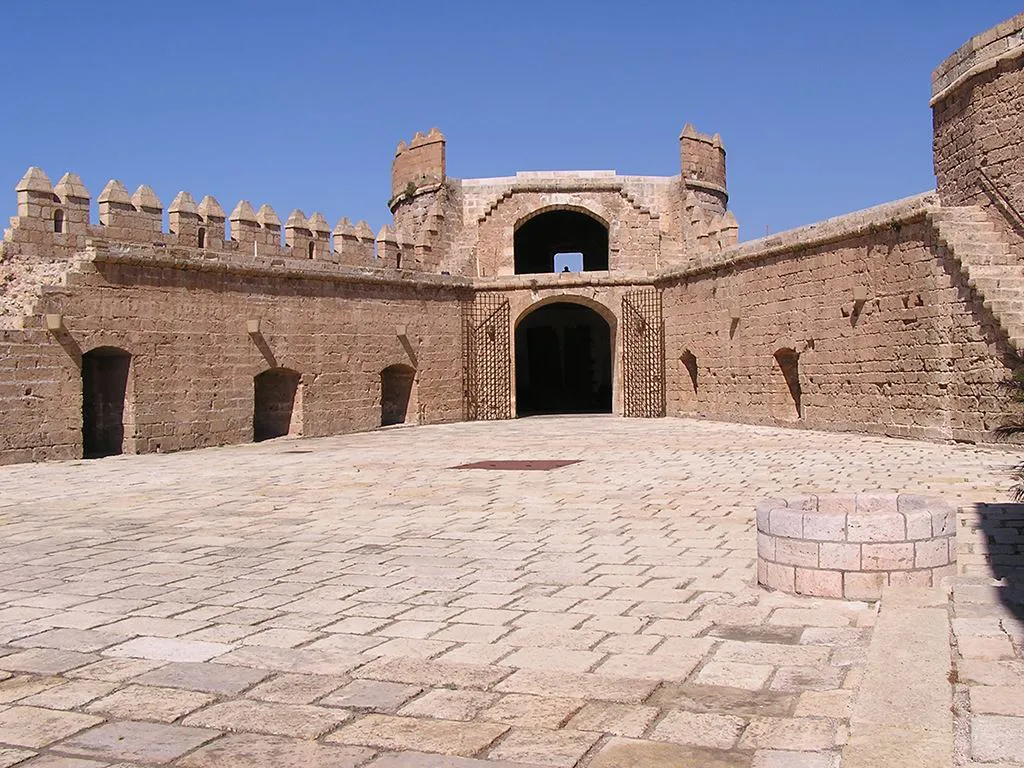
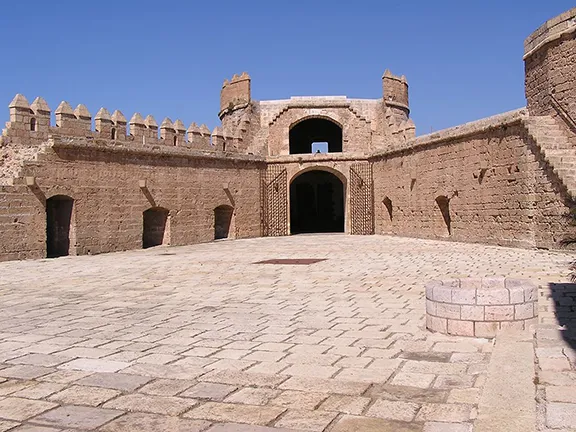
Alcazaba Almeria
It is during the 11th and 12th centuries in the Muslim period that Almeria reaches its peak, following the fall of the Calipharte of Córdoba. The Alcazabar, mezquita, water cisterns and the Jairán walls are a legacy of this period.
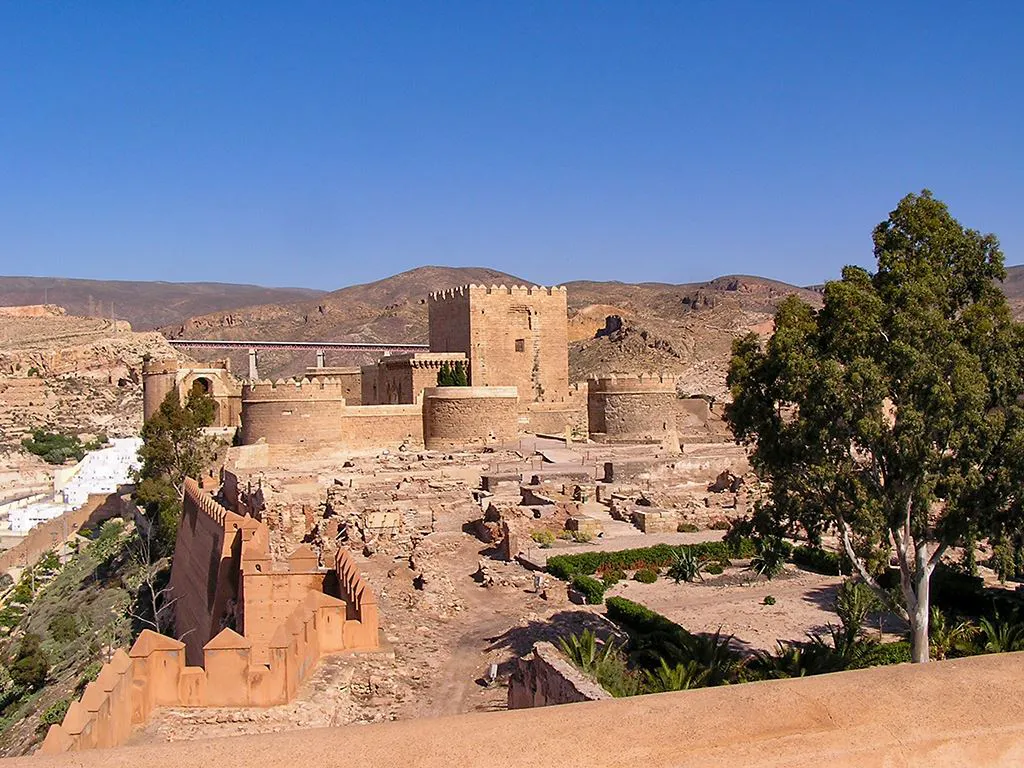
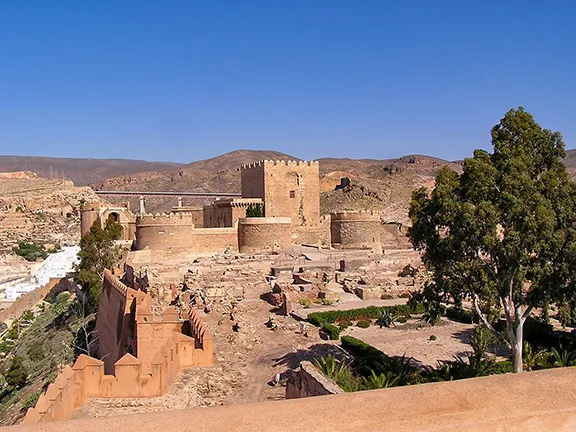
Medina Almeria
The first reliable news about the Muslim Almeria dates back to the 9th century, when Abd al-Rahman ordered a group of Yemenis to defend the coast from incursions by Normans from southern France. A settlement called Pechina was founded, defended by a watchtower at the top of the Alcazaba hill. The watchtower at Pechina was called Al-mariyat Bayyana, the origin of the phrase used by the Muslims to describe the future city of Almeria, ‘The Mirror of the Sea’. Pechina was inhabited by merchants and fishermen and grew into a sizeable village.
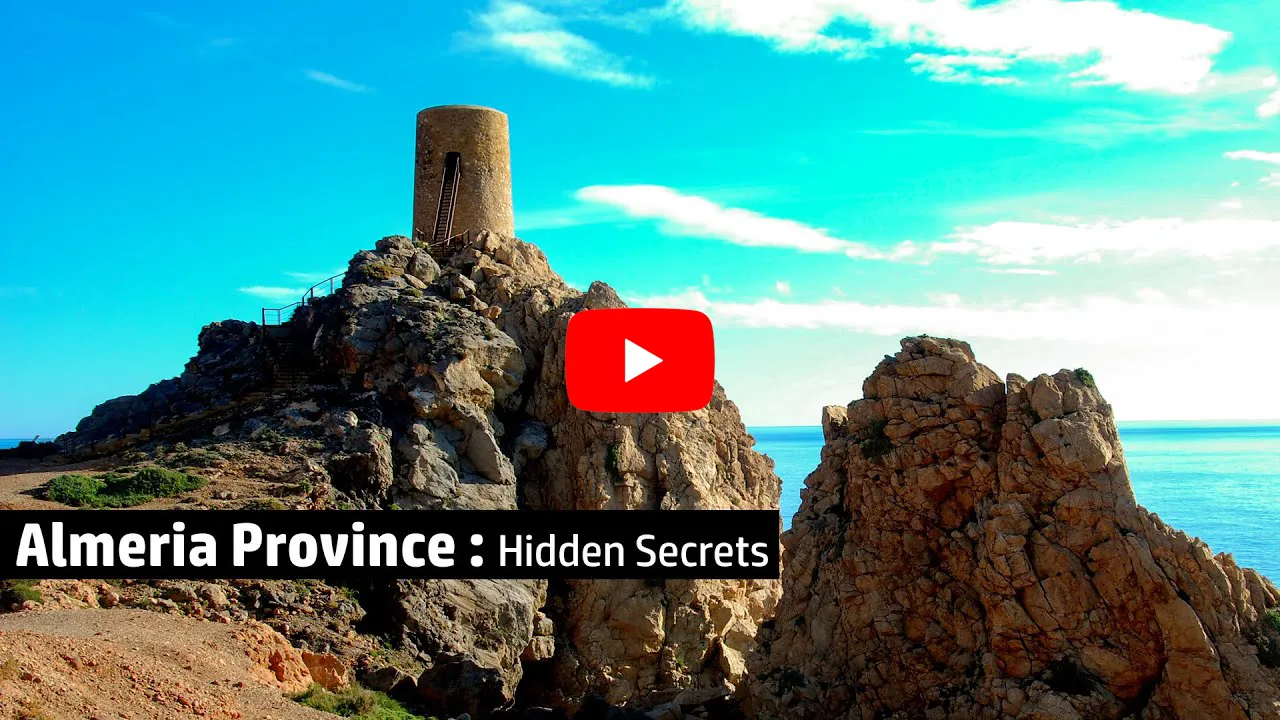
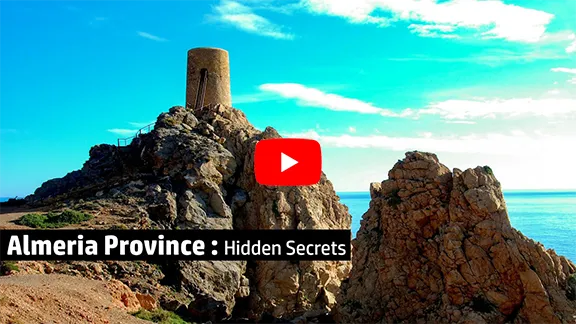
Video By: Julie Evans
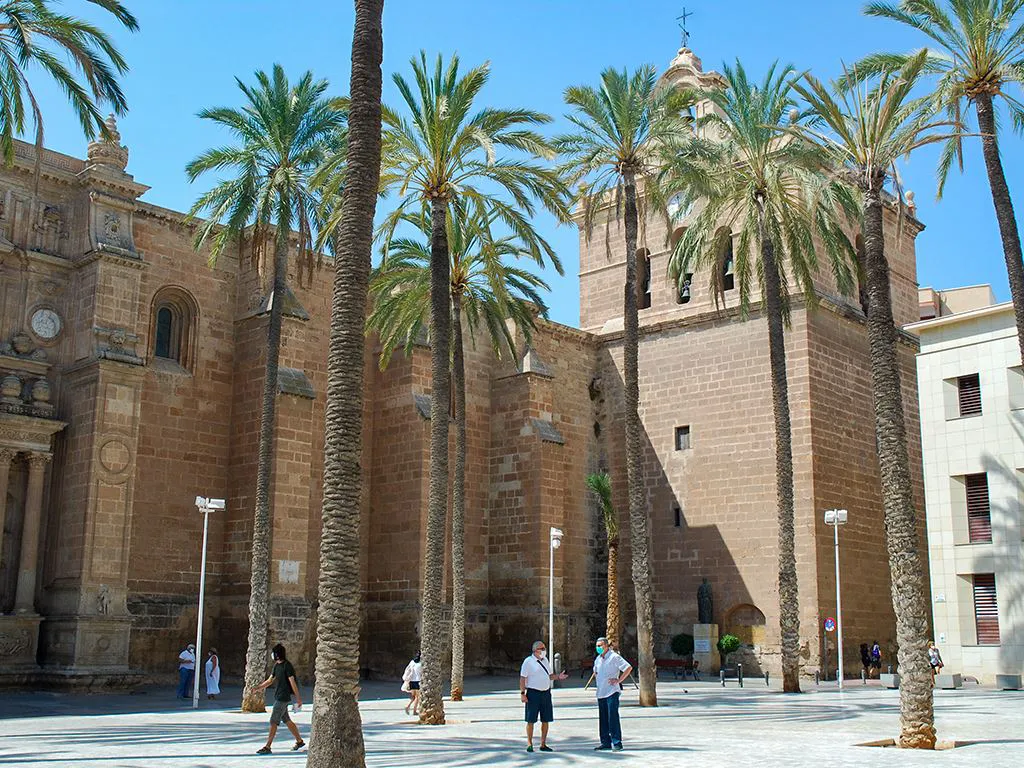
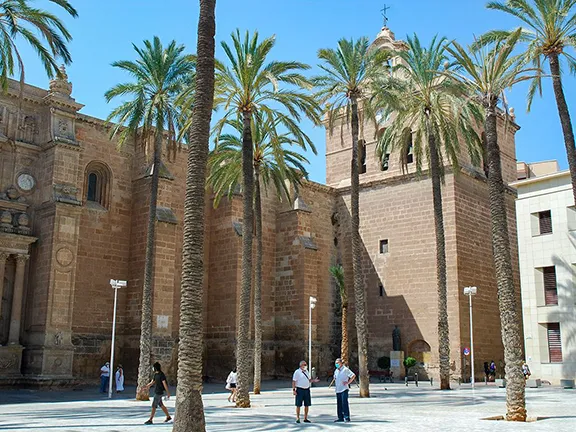
Cathedral - Fortress Almeria
Towards the end of the 9th century, the Muwallad Rebellion caused severe disruption. The Muwallads or mozárabes were Muslims of local descent or of mixed Arab, Berber and Iberian origin who had been gaining power within the Independent Emirate and eventually determined to seize overall control. They were eventually defeated by Abd al-Rahman III (912-961) who established ‘coras’, the equivalent of provinces. Pechina became a ‘city’ in 955 AD and the Great Mosque and fortress walls were constructed around the Medina. The religious and commercial centre, the suburbs of Al-Hawd and La Musalla, forming independent cities, where the population was grouped by origin, religion and crafts.
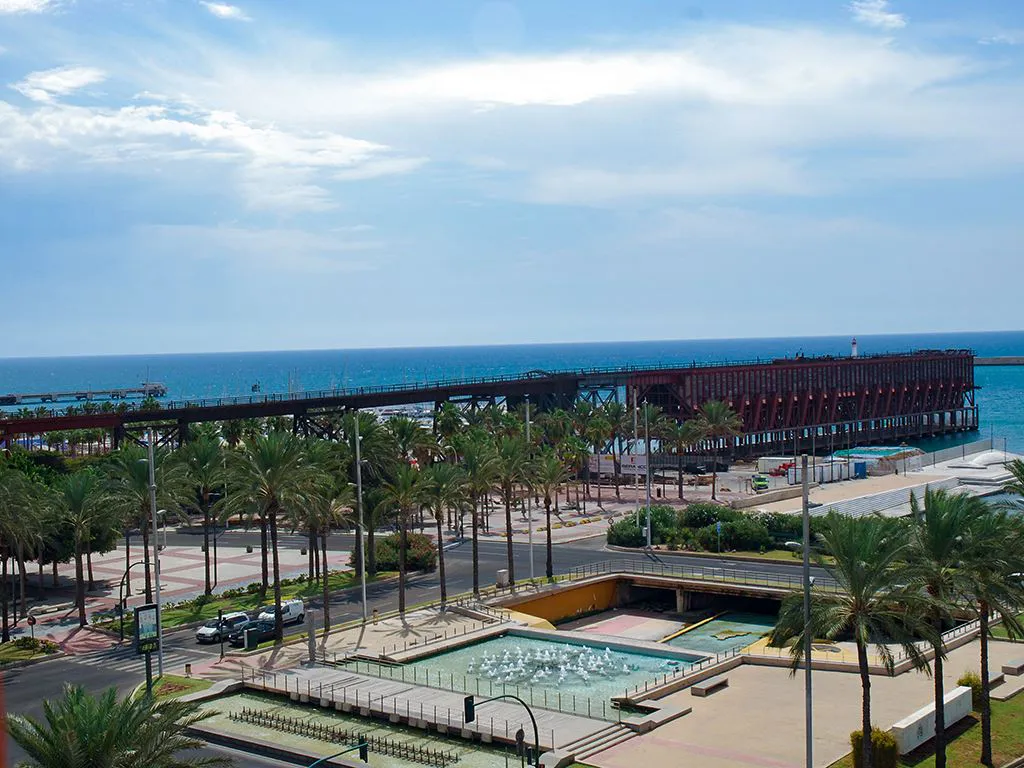
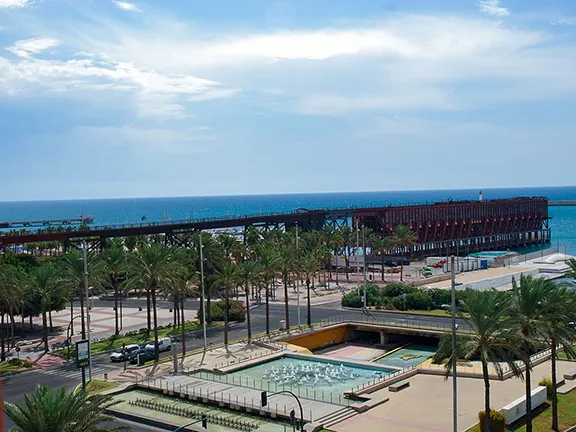
Cable Ingles Almeria
The Fitna of al-Andalus (1009 – 1031 AD) resulted in the breakdown of the united Caliphate of Córdoba into independent Muslim kingdoms called taifas. The Taifa of Almeria was actually led by Saqaliba or slaves, mainly from eastern Europe. Under Jayrán al-Amir, a Slavic eunuch, the taifa prospered and expanded into neighbouring taifas.
In 2015 a statue representing Jayrán al-Amir was placed at the entrance of the Alcazaba of Almería in commemoration of the 1000th anniversary of the creation of the Kingdom of Almería and him as the first monarch.
Almería became the international port of Al-Andalus, exporting silk, textiles and all manner of grains and dried fruits throughout the eastern Mediterranean. Almeria became famous for the number of looms in what must have been a huge cottage industry.
Towards the end of the 11th century, the Christians were putting pressure on al-Andalus, conquering cities on the outer edges of the taifas. Almeria attracted attention because of its economic activity and was captured in 1147 by troops of Alfonso VII, King of León and Castile. The Christians held the city for ten years at the end of which time, Almeria was almost bankrupt.
The Nasrid era saw Almeria again become a notable port but the end was in sight as the Christian armies gradually gained territory. By 1488, Almeria was on the border between the Muslim territories and Christian lands and in December 1489, Christian troops entered the city.
After the capture of the city on December 26 1489 by the Catholic Monarchs, Almeria’s fortunes declined. Attention turned to the Americas and a fortune in gold and silver started to enter Spain through Cadiz and Seville, many kilometres from Almeria. Raids by Barbary pirates became more common and a devastating earthquake in 1522 all but destroyed the city.
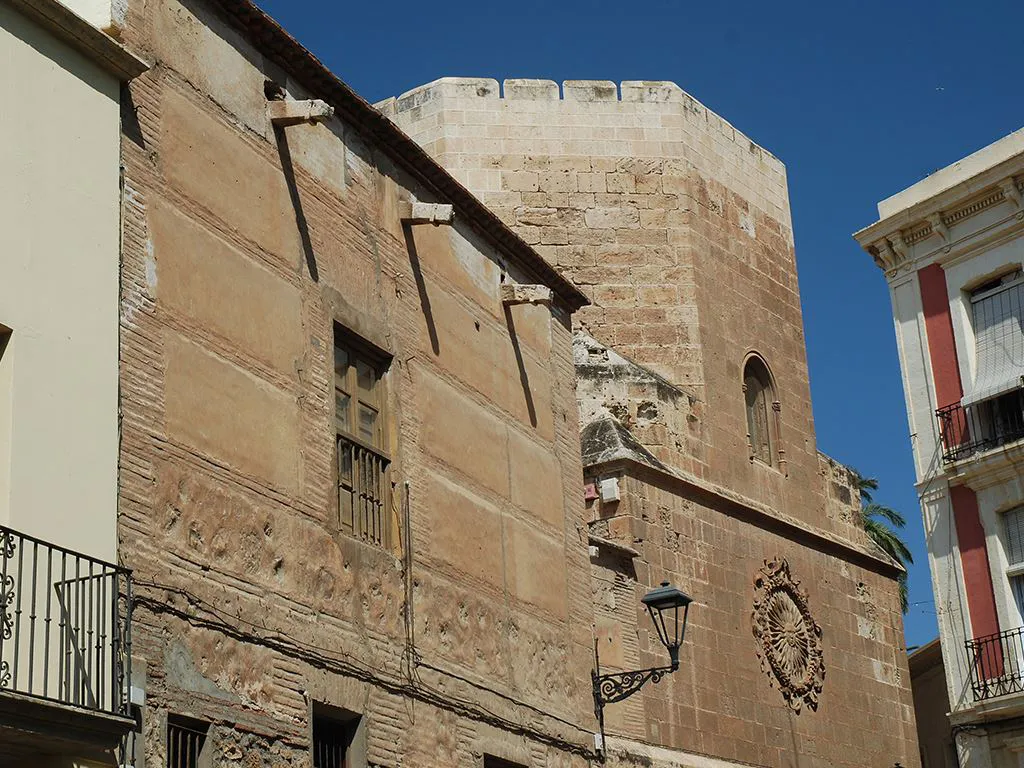
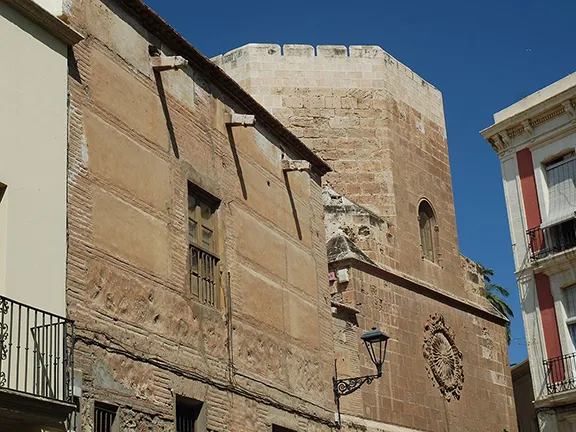
Cathedral Fortress Almeria
To help safeguard the city from the pirates, the Cathedral Fortress was erected in 1496 under the orders of the Cardinal Archbishop of Toledo Pedro Gonzalez de Mendoza on the site of the old mosque. It resembles a fortress as much as a place of worship. It is the only cathedral-fortress of its kind in Spain with solid buttresses, flanking towers, thick walls and a distinct lack of windows. A wide roof served for installation of guns and military surveillance. After the earthquake, the remaining 700 citizens grouped their houses around the cathedral.
Almeria affected a slow recovery in the seventeenth and eighteenth centuries. During the War of Succession, on March 15 1810, the French general, Goudinot occupied the city. The French troops were finally evicted in 1812.
Fernando VII returned to power in 1814 and repealed the Constitution proclaimed by the Cortes de Cadiz - the Government in Exile. Fernando was determined to restore an absolute monarchy.
The event known as 'The Killing of the Coloraos' took place in 1824. A group of soldiers from Gibraltar, who were nicknamed “the coloraos” from the colour of their coats, landed in Almeria with the intention of proclaiming freedom and restoring the Constitution of 1812. The attempt failed and 22 of them were shot by the absolutists in the Rambla de Belen. Years later a monument was erected in the Plaza Vieja, lovingly called the “pingurucho”, to honour the attempt. Pingurucho was destroyed in 1943 following the first visit of General Franco to Almeria. It was restored in 1987 and the monument is now the scene of an annual tribute to the ‘coloraos’ held on the 24th August.
By the mid 19th century, the city of Almeria had expanded into an unplanned, urban spawl and the mining boom brought more people and money into the city. In 1855, the old city was largely demolished and a planned development that included a street plan, provision for sewerage and fresh water supply was instigated. The city began to take on its modern appearance.
The mining boom ended in the 1940s, just after the Spanish Civil War, and the city of Almeria once again found itself in decline. It was only in the 1960s and later that the economy recovered slightly with the advent of intensive cultivation under plastic in the surrounding countryside.
Almeria is still a relatively poor city and it started to turn towards tourism for a new source of income. The historical centre of the city, centred on the Alcazaba and Cathedral is augmented by a new Archaeological Museum and restoration of the ‘Cable Ingles’, the British built ore loading pier.